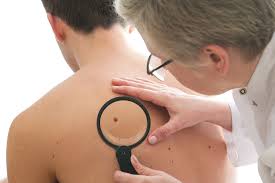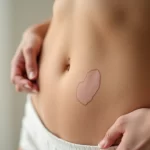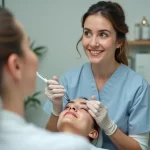Knowing what to look for in a noticeable mole can help you quickly determine if there should be concern. Plenty of people believe moles to be normal while others worry over the smallest of details on their skin. This is why we want to share with you our ABCDE guide for checking moles. Taking the time to evaluate your body eliminates unnecessary worrying and helps you determine when a full skin screening is necessary.
A – Asymmetry
A healthy mole, if folded in half should be a mirror image of itself because they’re symmetrical. Melanoma, the deadliest form of skin cancer, is normally asymmetrical. This means, it looks different from end to end.
B – Border
Most healthy moles have a smooth, round border. Melanoma will normally have an irregular, jagged border. Moles won’t be a perfect circle, but you’ll be able to tell the difference between a melanoma mole and some of the other moles on your body.
C – Color
Most moles are brown, but if you were to start seeing reds, blues, whites and blacks inside the mole, there should be some concern. You should be able to visibly see some of the differences in colors in comparison to healthy moles on your body.
D – Diameter
Most moles are usually less than 6 millimeters which is about the size of a pencil eraser. Anything bigger or gradually increasing in size should be examined by a dermatology professional.
E – Evolving
If a mole is irregular in size, the border is jagged, colors are beginning to formulate inside and it’s growing, then you’ll definitely want to consider getting it evaluated sooner rather than later. Evolving moles normally means skin cancer is on the move.
Thanks for the taking the time to check out our ABCDE Guide for Checking Moles.
If you’re struggling to schedule an appointment with your local dermatologist, we’d love an opportunity to provide you with a full body skin exam in the comfort of your own home. Our mobile skin exam services embody convenience while providing patients with more detailed care at an affordable price. We understand that this ABCDE guide for checking moles is only a precautionary measure – and it’s always best to seek advice from a certified provider. We serve the entire Phoenix metro area.






